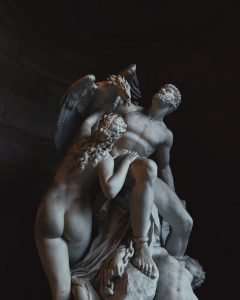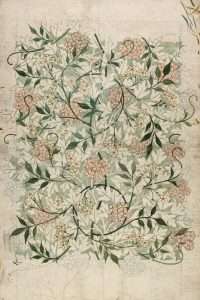The uniqueness of pastel lies in the fact that it is a dry medium. Unlike oil paints or watercolours, you will not have to wait for your work to dry before you can continue with the next step. This is a very important point, because one of the great advantages of using pastel is that it allows you to be very spontaneous with your strokes and movements, as there is no need to worry about mixing colours or blending.
A good pastel painting will be built up from several layers of colour, which are applied in succession. You should not try to paint everything in one go. It is better to start with light washes and gradually build up colour to achieve deeper shades and more contrast.
TIP: Try building up colour by applying light strokes or lines at first, then follow with darker strokes or lines in adjacent areas. This will give your drawing/painting more depth and texture.
The most important thing when working with pastels is to keep your surface clean and free from dust between each layer of pastel. It’s vital that you don’t drag dust into your new layer when applying it, as this can cause the colour to become muddy and dull.
Pastel painting is a unique form of artwork that combines the intense colors of oil paint with the ease of use and affordability of crayons. Invented in 17th century France, pastels were initially used as an alternative to expensive paints, but have now become so popular that they are often confused with crayons.
As you can see there are many different brands of crayons on the market today, each having its own unique blend of color pigments. The same is true for pastels, which are produced by a number of companies such as Rembrandt, Sennelier, Caran d’Ache, and Lyra.
As a result of this increased popularity, pastel art is no longer confined to children’s coloring books. Pastel artists from around the world are finding ways to utilize these vivid colors to create some truly exquisite pieces of fine art.
A pastel painting is composed of four things: color, light, shape and texture. The way we perceive these elements is what gives the painting depth.
Color is the most obvious element in a pastel painting. This is because color lends itself to the visual expression of emotions.
What is color? Color comes in three types: hue, value, and saturation. Hue refers to the name of a color like red or blue; value refers to how light or dark a hue is; saturation refers to how pure or dull a hue is.
The relationship between these three elements—hue, value, and saturation—is what creates color harmony. A piece of art has harmony when all of the colors go together well and create an overall pleasing effect. When colors clash and fight with each other in your overall composition you have disharmony.
Newton’s pastels are known for their intense colors that are often richly saturated—rather than dulled down as they are in many other brands of pastels. This saturation can be used to create more vivid compositions that have great energy.
Pastel is a favorite medium of many artists because of its versatility. Unlike oils and acrylics, pastels are not heavy and can be worked on the side of a rough surface. It is possible to create a canvas that appears as if it were done in oils but in fact was created with pastels.
Tones can be strong or subtle, and the colors intense or muted. Pastels are also very forgiving in nature. They can be reworked, changed, or even erased if necessary because they do not dry up like oils do.
There are many books on how to use pastels, but it should not take long before you want to move on from the basics and experiment with different techniques for creating your own pieces of art.
One way to experiment with pastel painting is by replicating famous pieces of art. This provides you with an opportunity to learn more about the artist’s work while at the same time allowing you to create your own unique piece of art. To help you get started, here are some examples of famous paintings that have been recreated using pastel painting techniques.
Pastel painting is a medium that can be created on any type of paper or board. It can also be applied to canvas with many different kinds of adhesive. Pastels have their own unique way of creating color and it is very beautiful and pleasing to look at. The process incorporates a variety of methods in which an artist uses the pastels in order to create various effects that are unique to each one. When looking for instructions, it is important to make sure you do not overlook the importance of knowing what kind of paper you will be using. If this is not done correctly, the final outcome will not be as good as it could be.
Tone:informative
Pastel art is a form of fine art using “pastels”, which are sticks of colored chalk. Artists use these sticks to create different textures, shades and hues in their paintings. Pastels can be used on many materials including paper, cardboard, wood and canvas.
Pastel painting is considered a less toxic alternative to oil paints. Artists who work with pastels have less risk of inhaling harmful chemicals and there is no odour associated with the pastels themselves. Unlike oil paint, there are no solvents involved in the process of creating pastels, therefore there is not as much risk of fire or toxic fumes.
There are many types of pastels that can be used by artists working in this medium. Oil pastels are considered a type of crayon and are made from a combination of waxes and pigments using an oil binder. Oil pigment pastels harden when exposed to air. Manufacturers make these types of pastel by mixing pigments with ground chalk and adding linseed oil or other vegetable oils as the binder. Pigments are added to give the colours their intensity and brightness. A fixative may also be added to prevent smudging once the painting has been completed.
Artists usually use two-sided past
Art is an incredibly popular hobby. There are many ways to learn how to make art, but a lot of them involve books which seem to be either too complicated or just plain boring. This guide has a different approach: to make it as simple and easy as possible for the absolute beginner.
Tutorials can be an excellent way to learn, but they tend to spend a lot of time discussing the theory of painting, which may not interest beginners. This guide will provide the basics in easy-to-understand terms and avoid those topics that aren’t relevant.
The best way to learn any skill is to practice it, so this guide has been written with this in mind. Every step will have a simple exercise for you to do, so that you can see what your final results should look like when you’re done.


